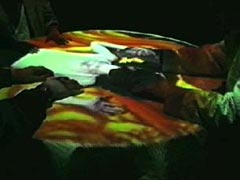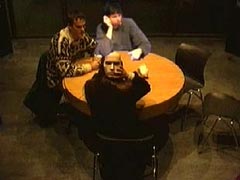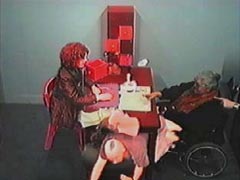| http://www.artdes.salford.ac.uk/sermon/visionl |
 |
||||
|
In which circumstances or on what occasion did you introduce [electricity or electronics] TELEMATICS or THE NETWORK into your work? I first heard the word telematics in a lecture by Roy Ascott during my first year as an undergraduate art student in 1985. How can you describe the technical and aesthetical part played by electricityy] TELEMATICS in the work you will be showing in the [Electra] TELEMATIC CONNECTIONS exhibition? Please give your comments as regards these points. The complexity and technical dynamics of this installation are embodied with the single term "telematics." The repeated use of this word in my work since the beginning of the 1990s has highlighted a technique that has become central to my work. "Telematic Dreaming" (1992), "The Telematic Séance" (1993), "Telematic Vision" (1994), "The Tables Turned--A Telematic Scene on the Same Subject" (1997), and "Telematic Encounter" (1999). All these works embody open systems of interaction, involving two or more remote locations and participants, linked together via computer data networks. Developing and exchanging content through participation and involvement through complex interface environments/installations. According to you, which are the consequences that can arise from the combination of art and contemporary TELEMATIC technology? The marriage of the terms tele and information informaticc) is not one you would usually associate with ground-breaking discoveries. Yet what it signals is far greater, amongst the many directions it points towards, includes the term telepresence--being in more than one place at one time, ultimately a system of teleportation. *These questions are based on ones asked by Frank Popper of the artists in his seminal exhibition Electra: Electricity and Electronics in the Art of the 20th Century in 1983 at the Musée d'Art Moderne de la Ville Paris |


